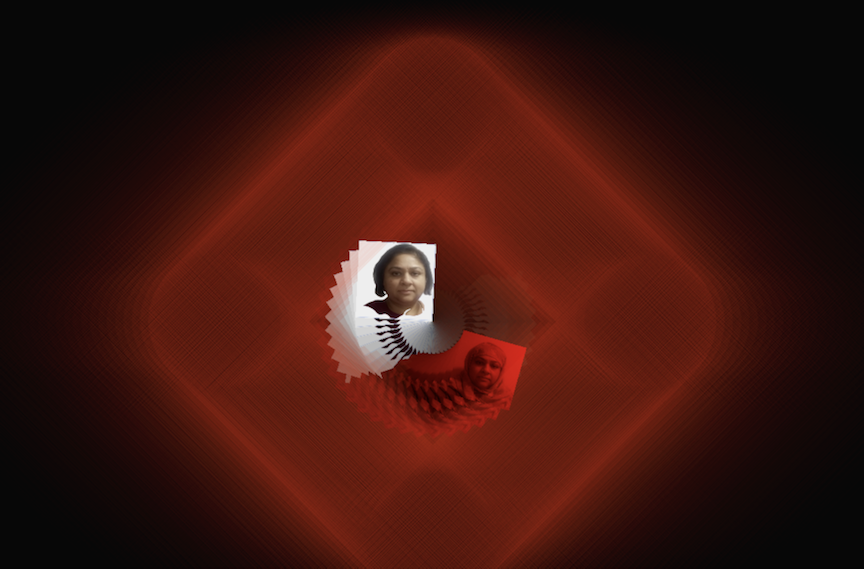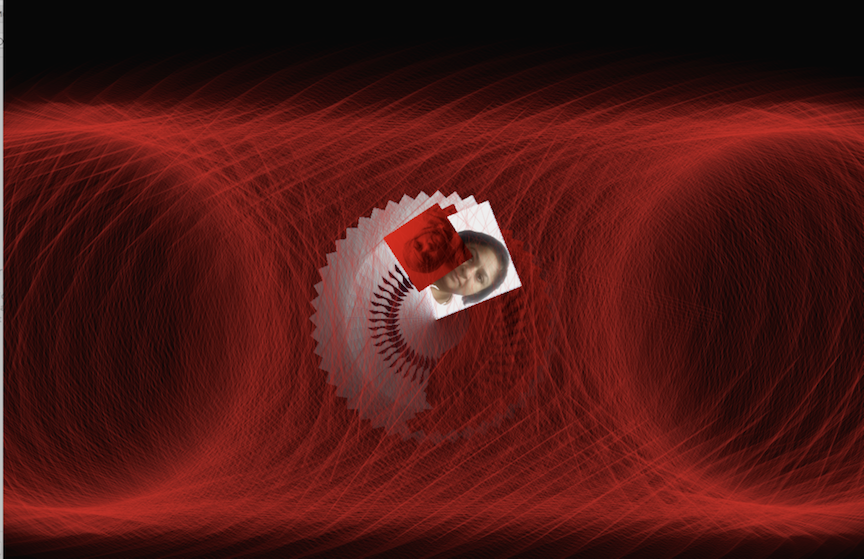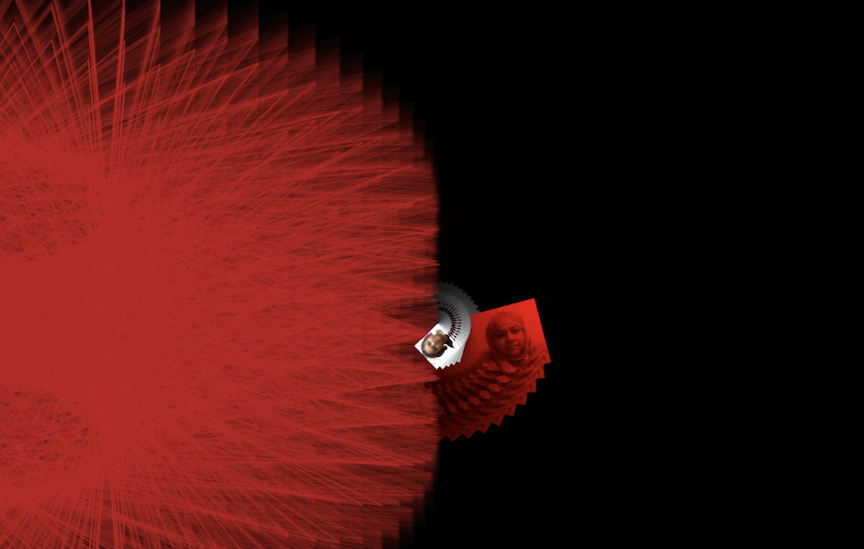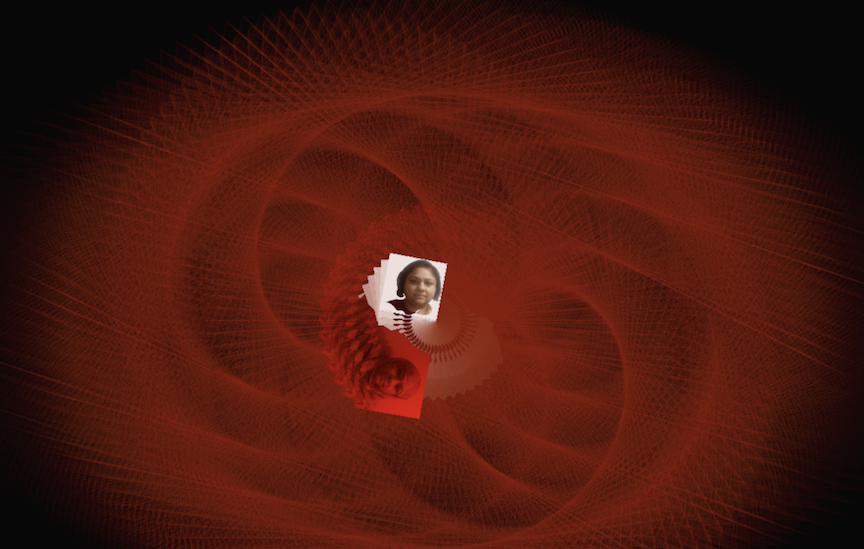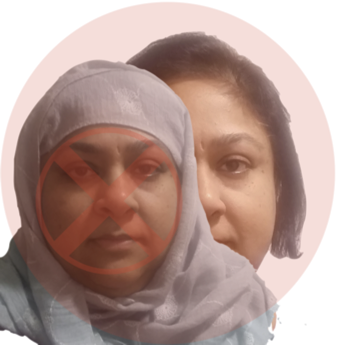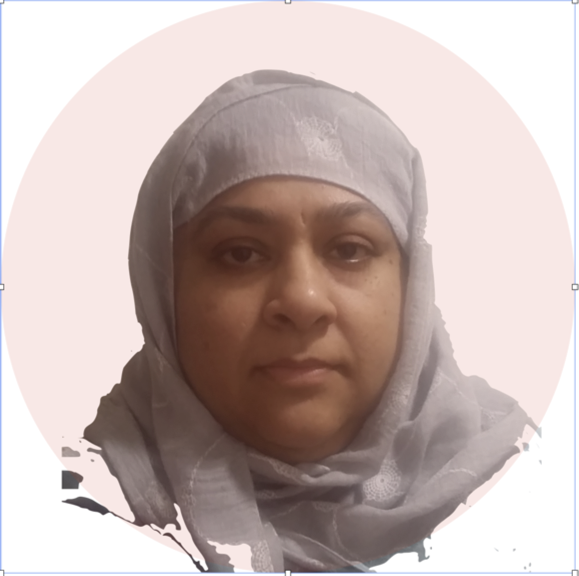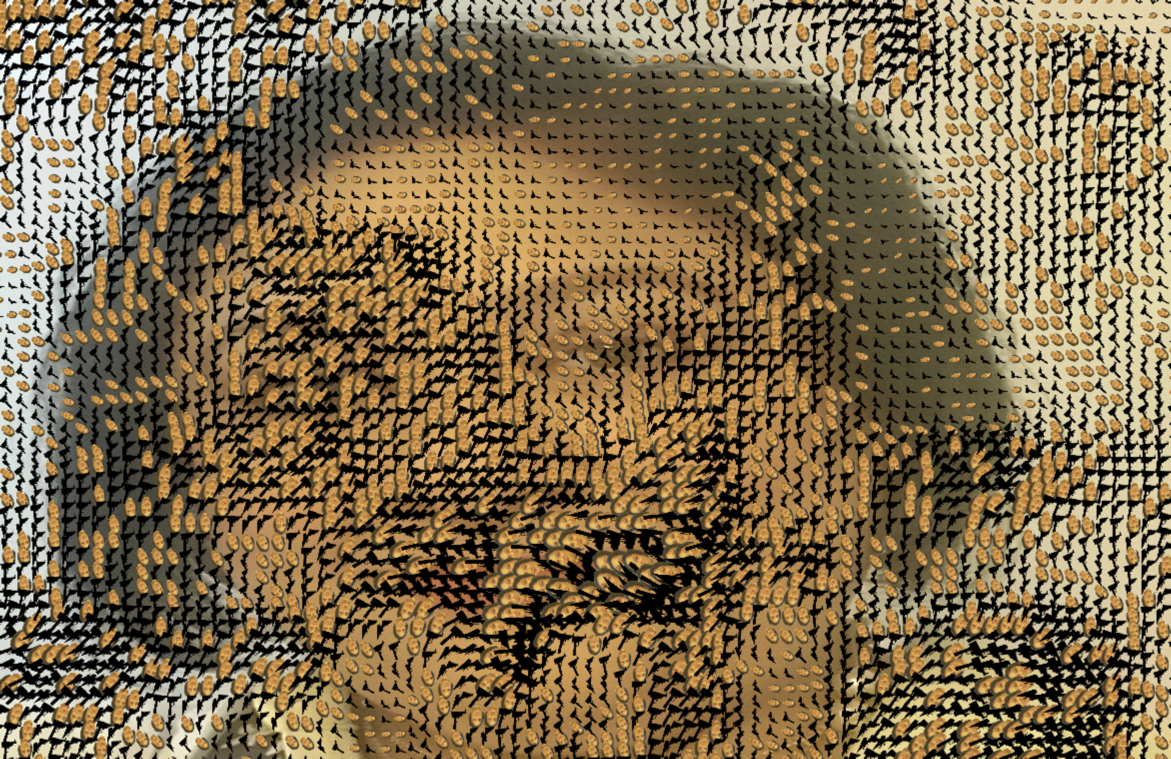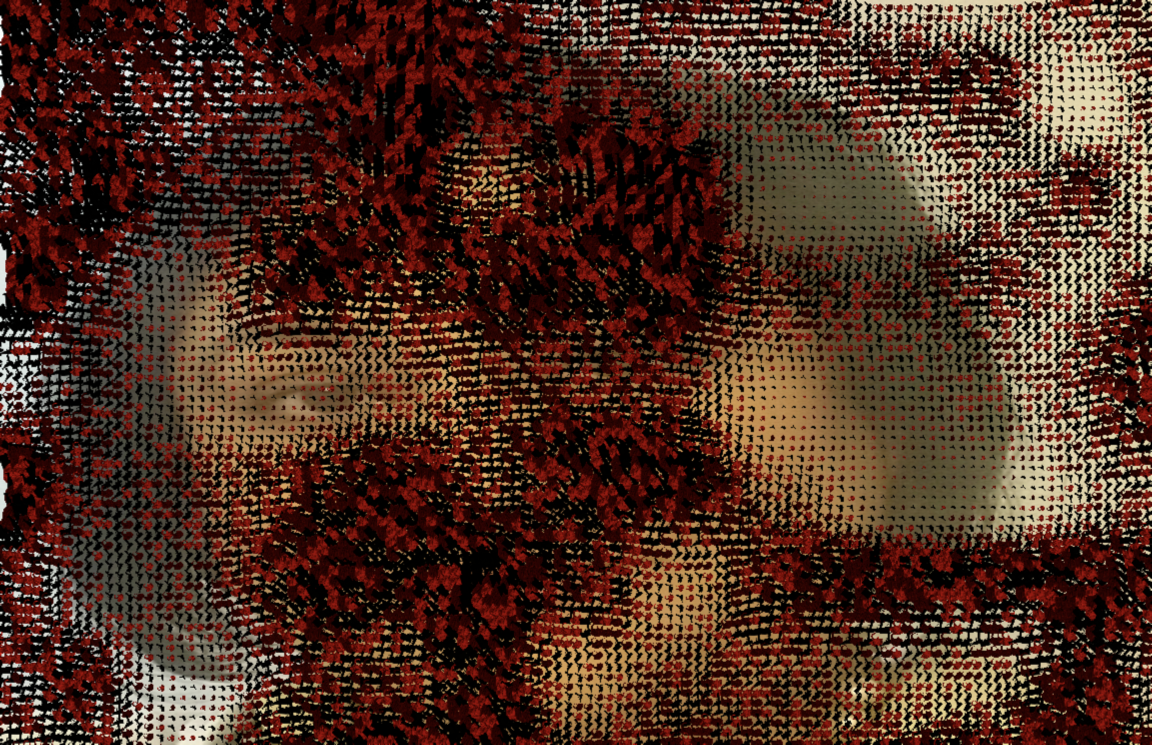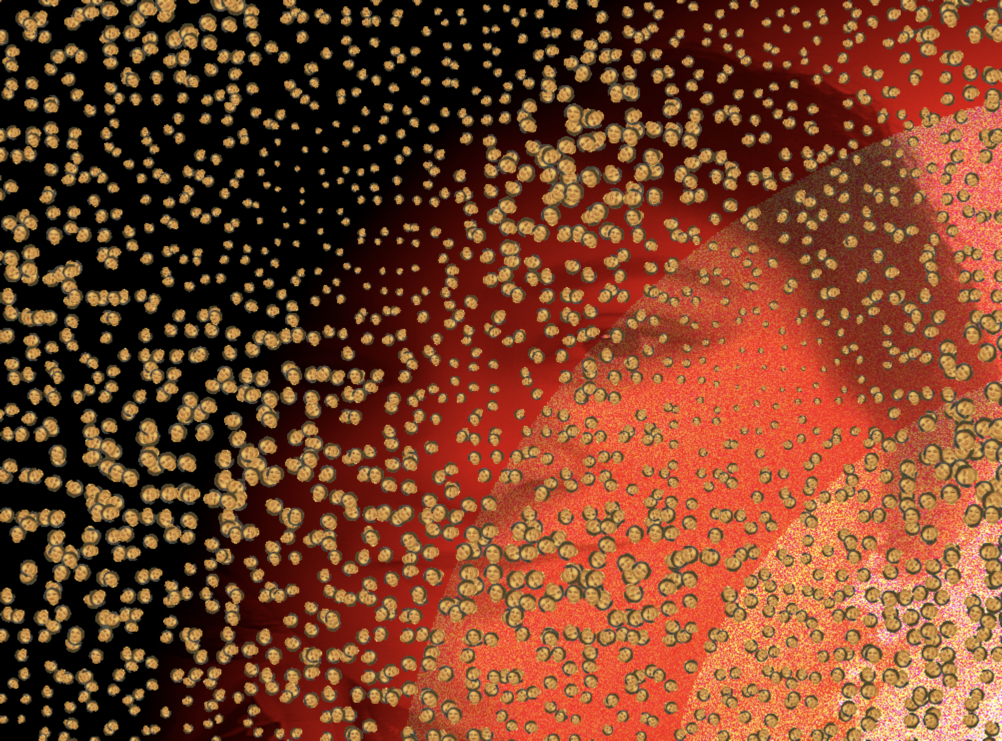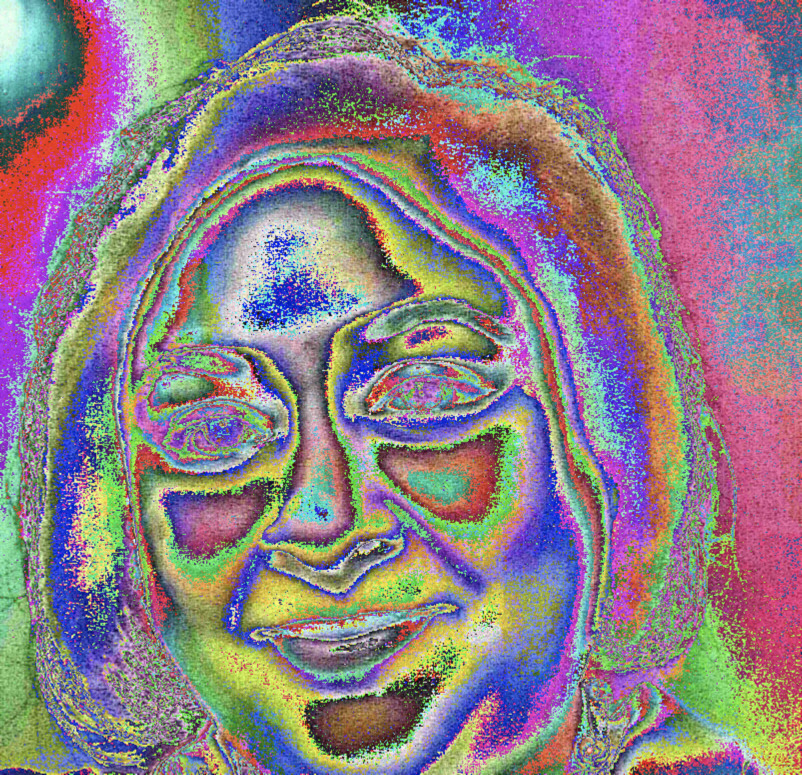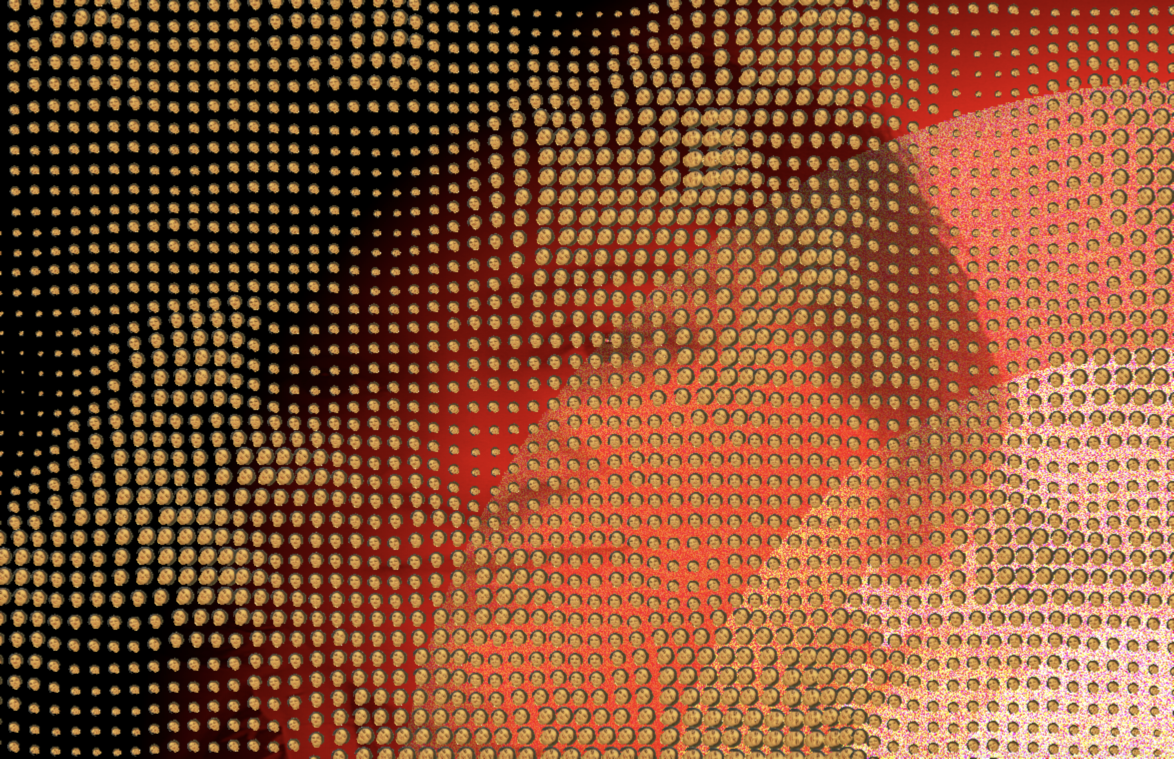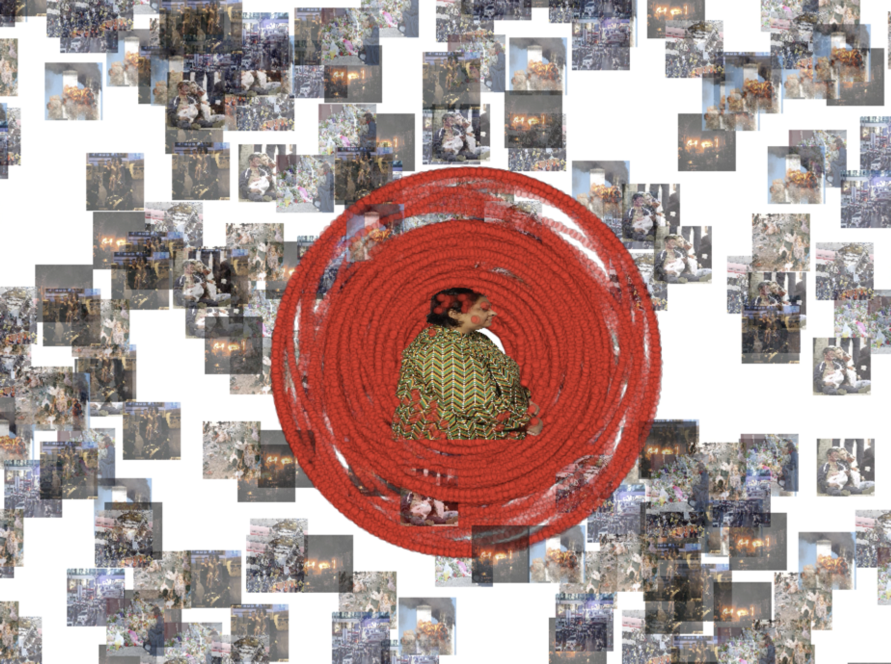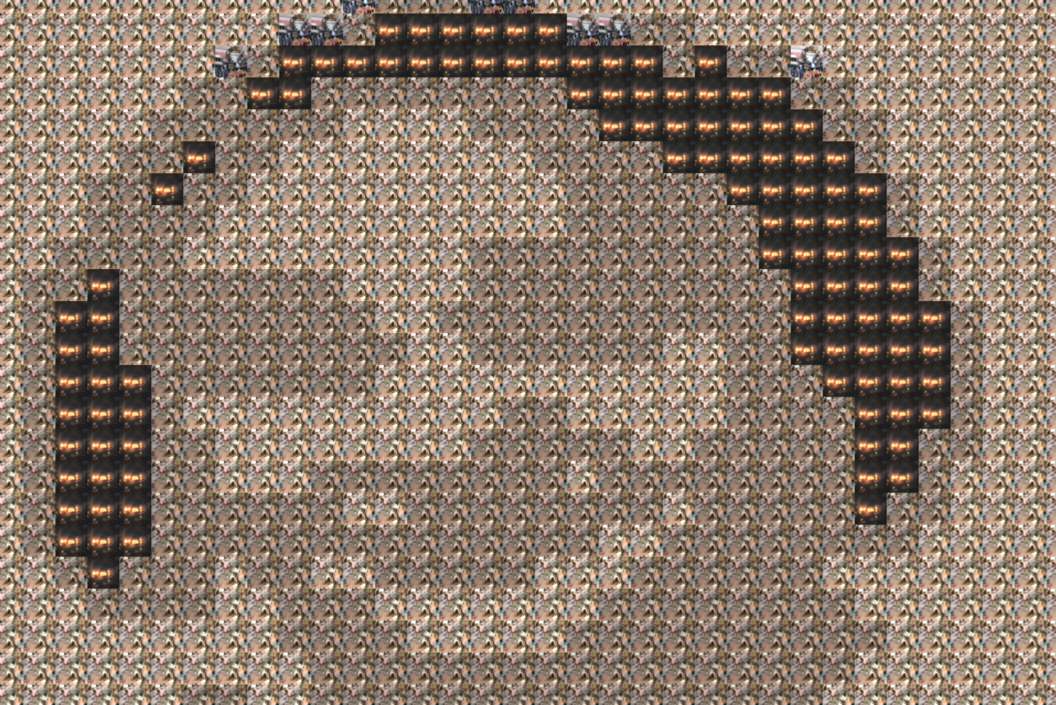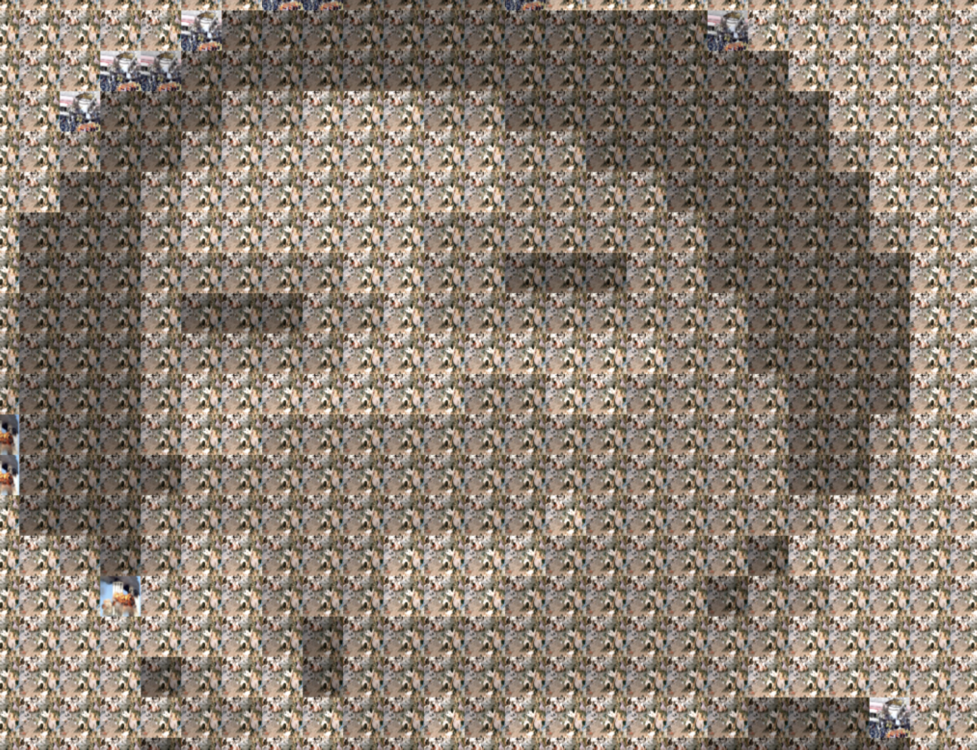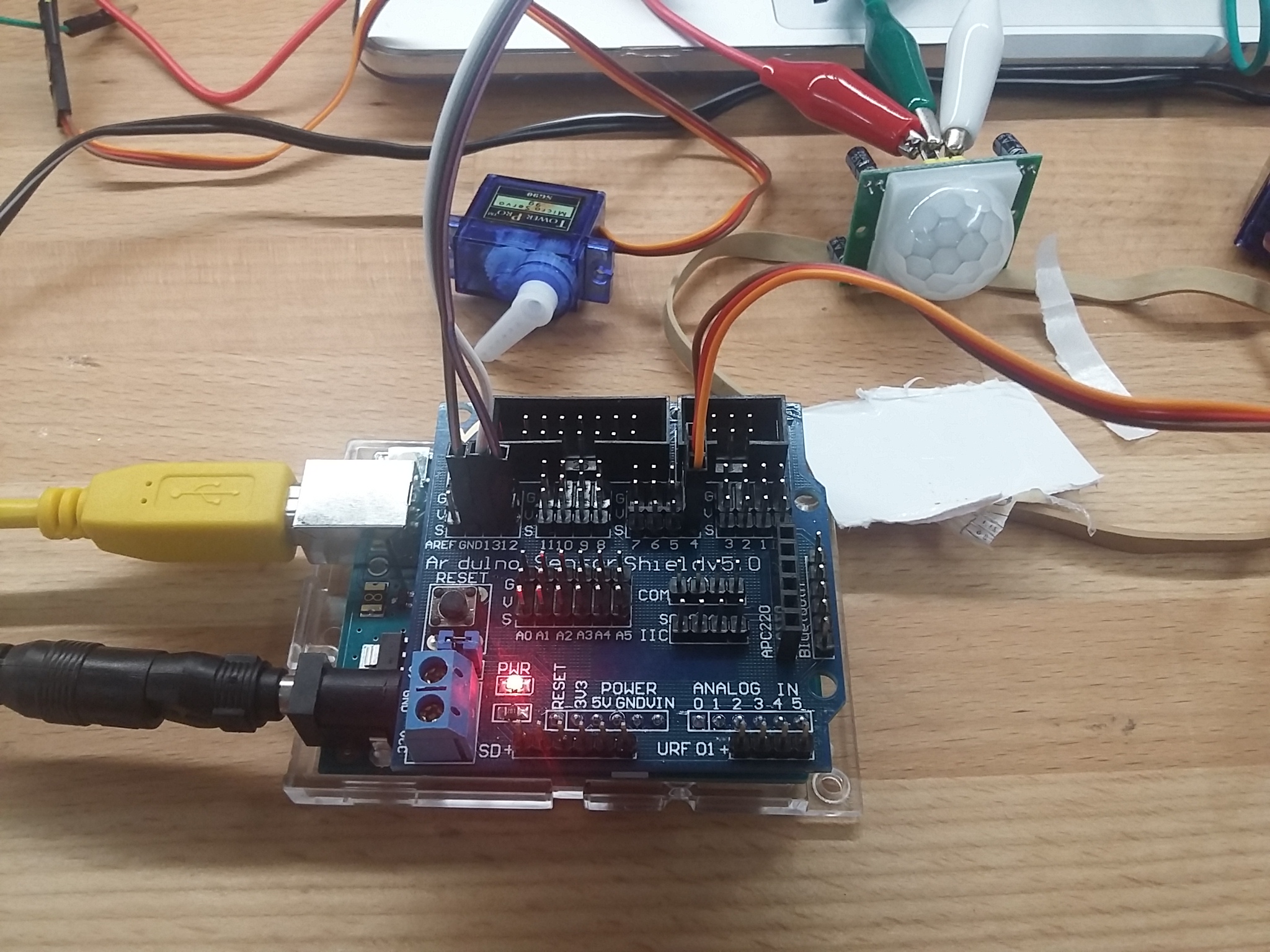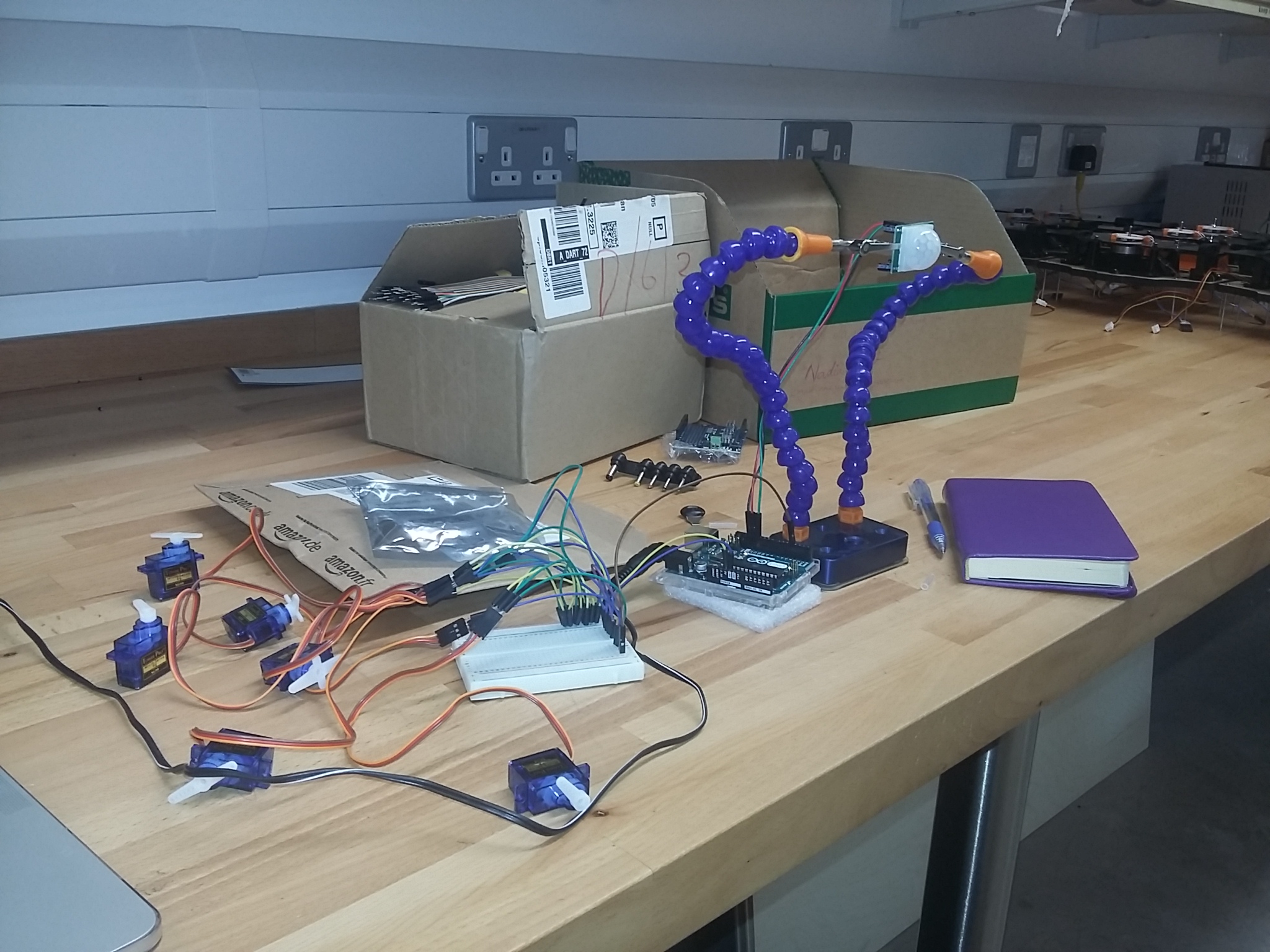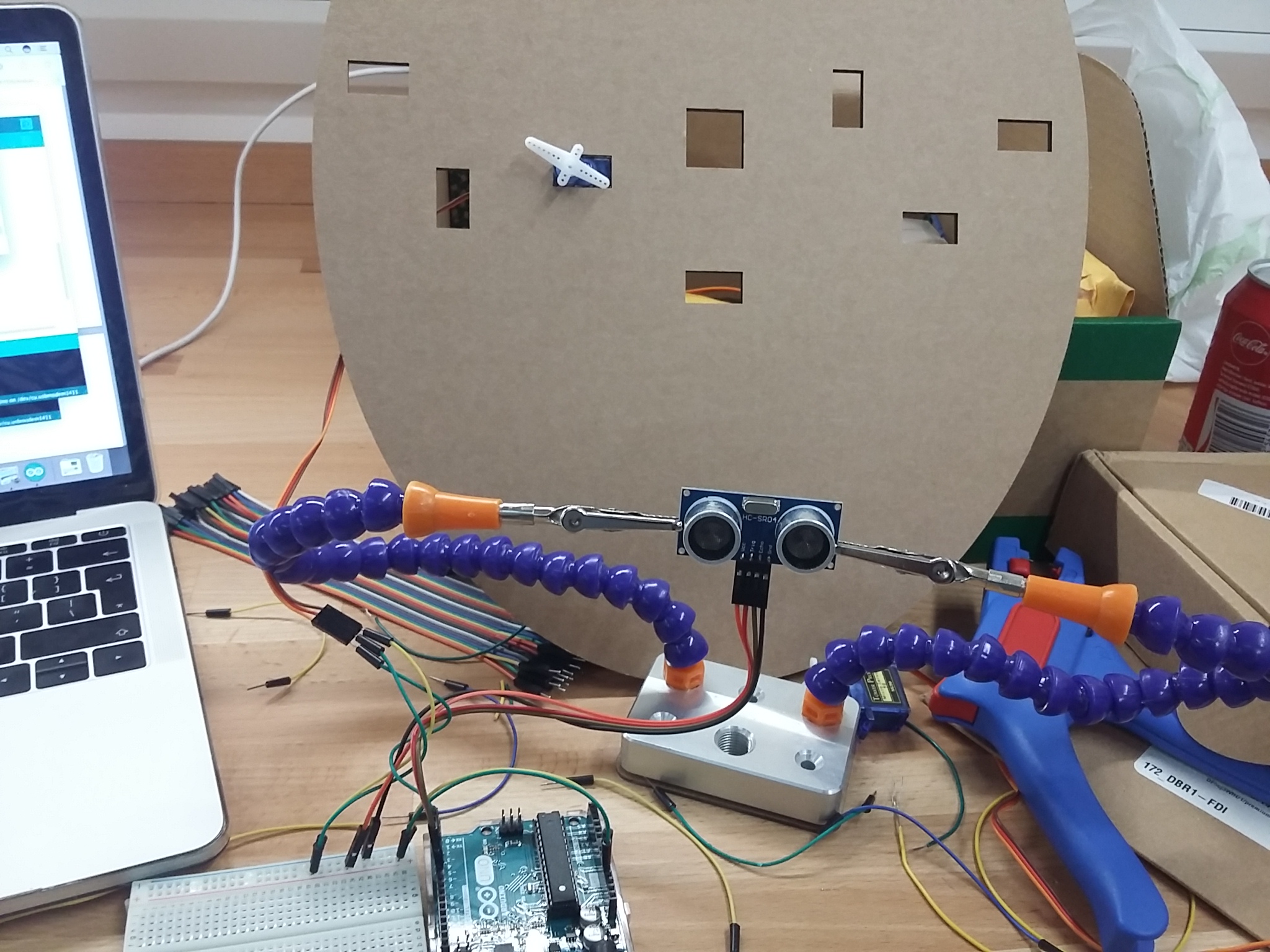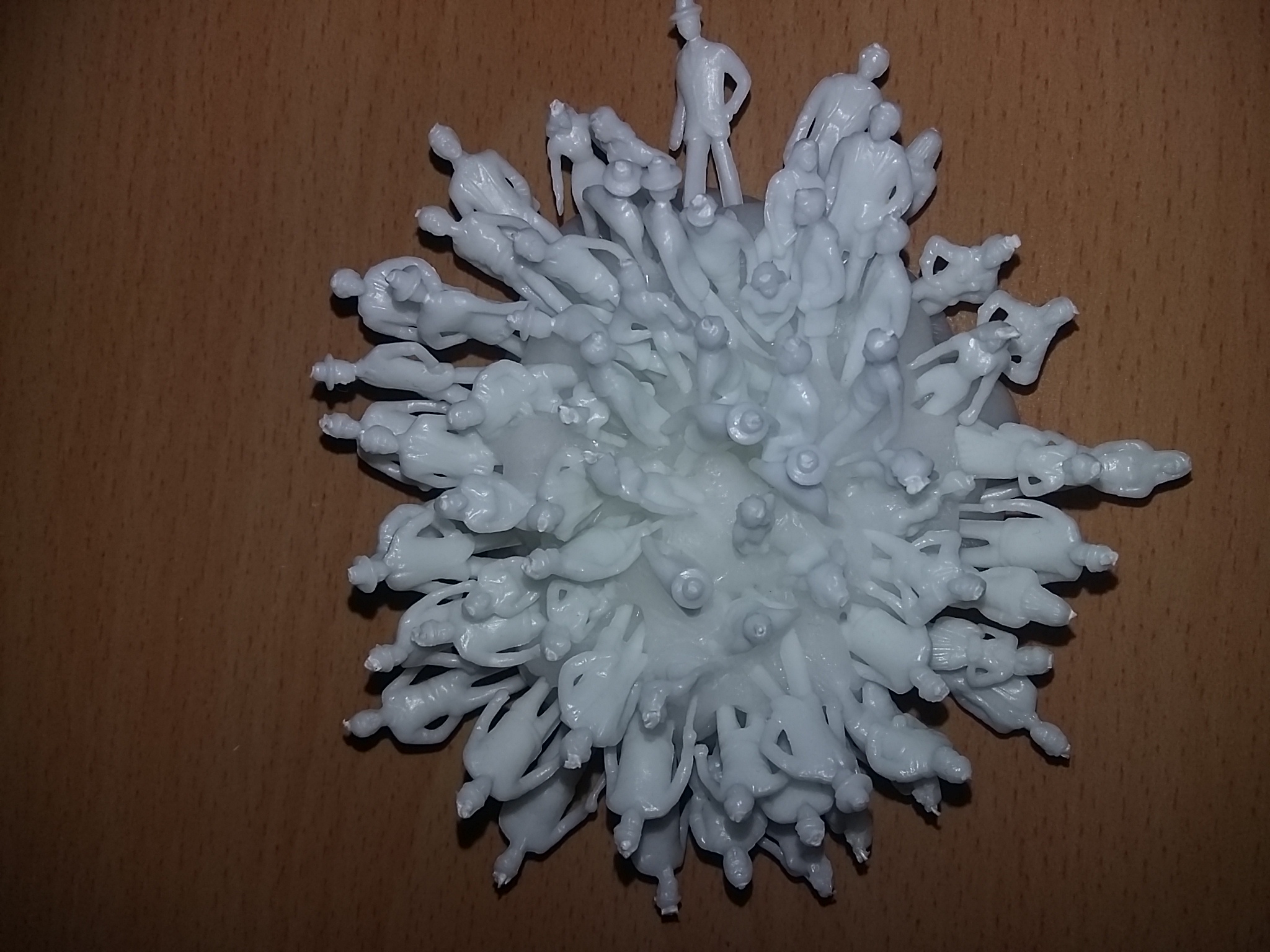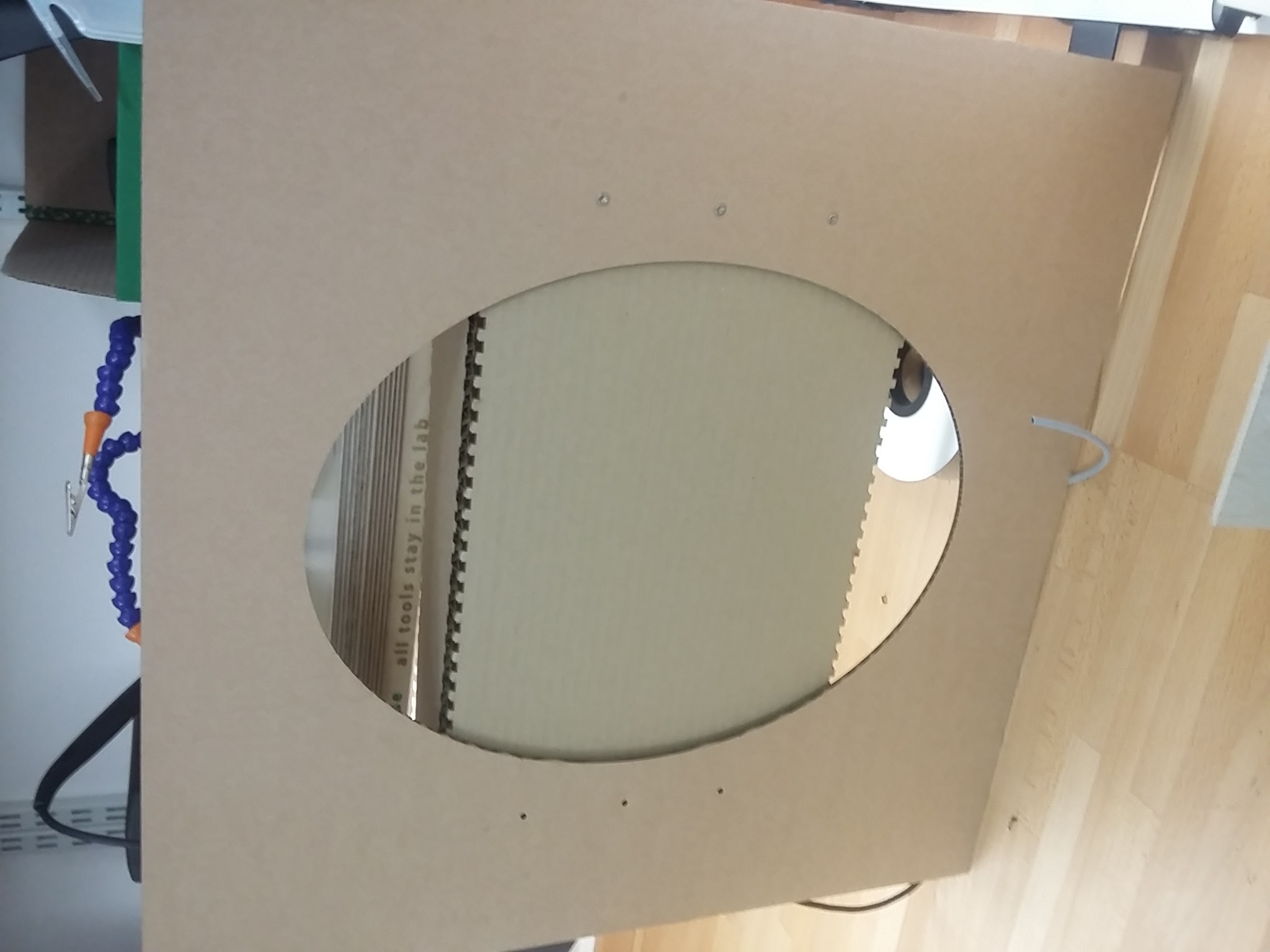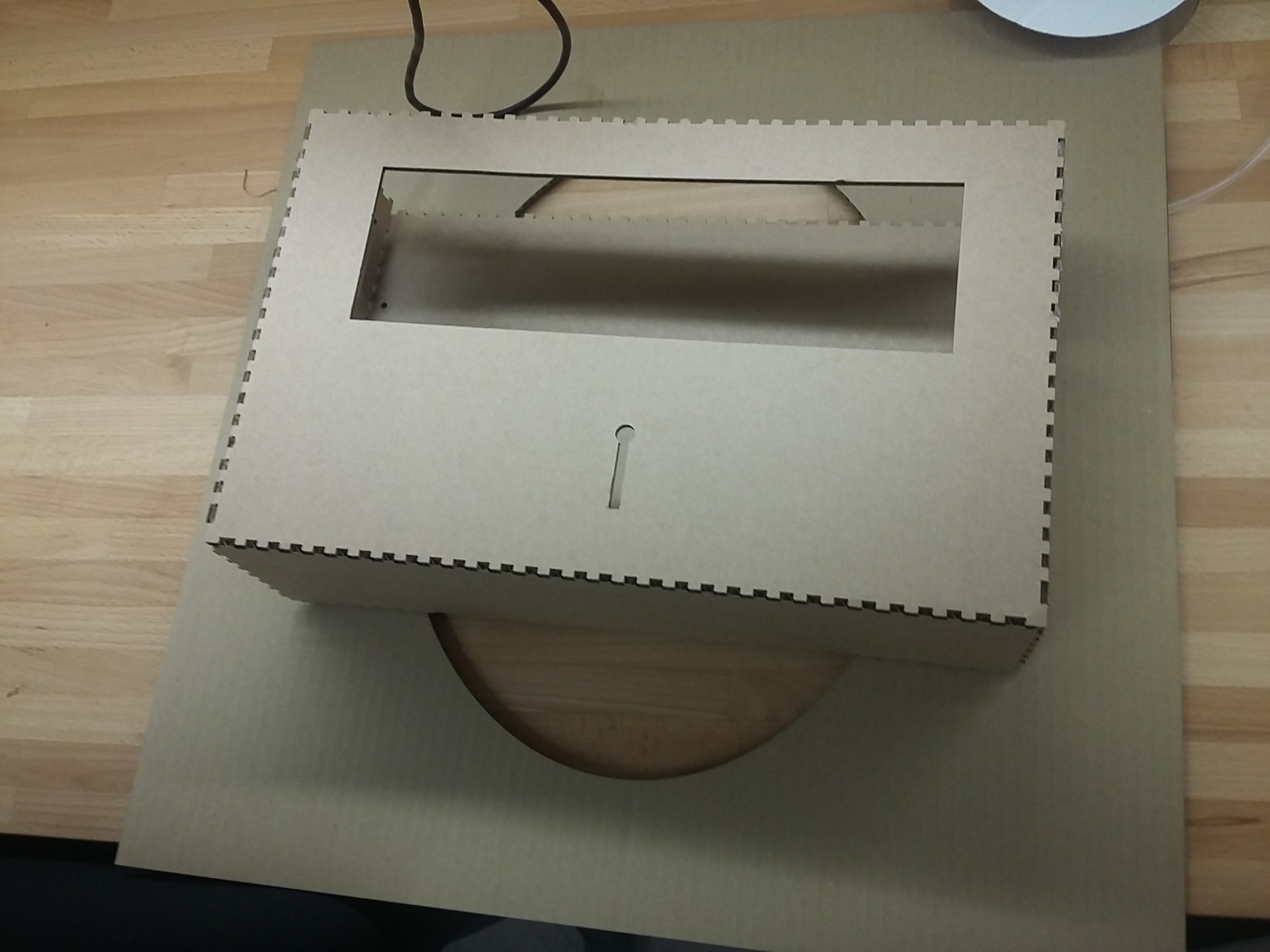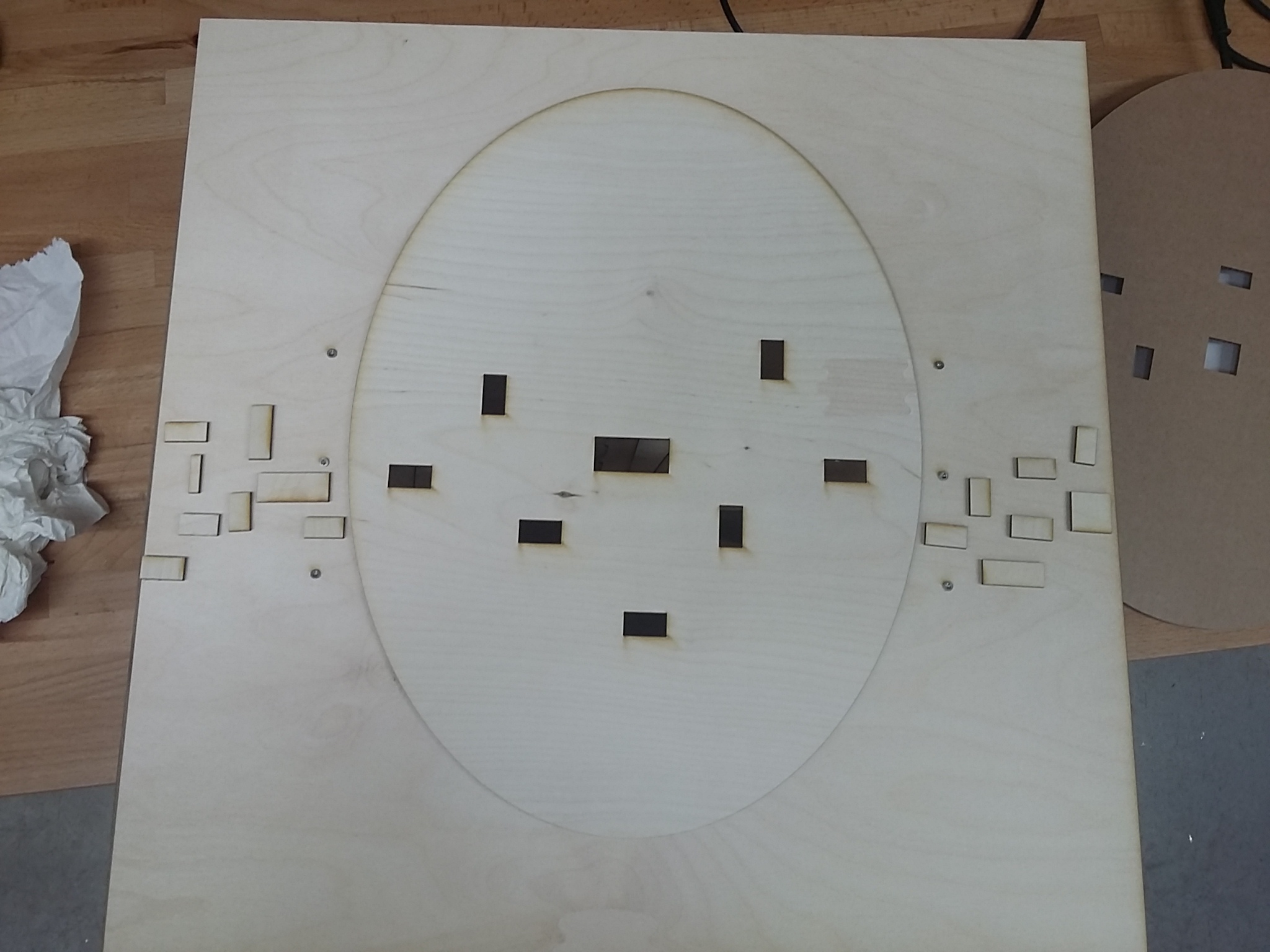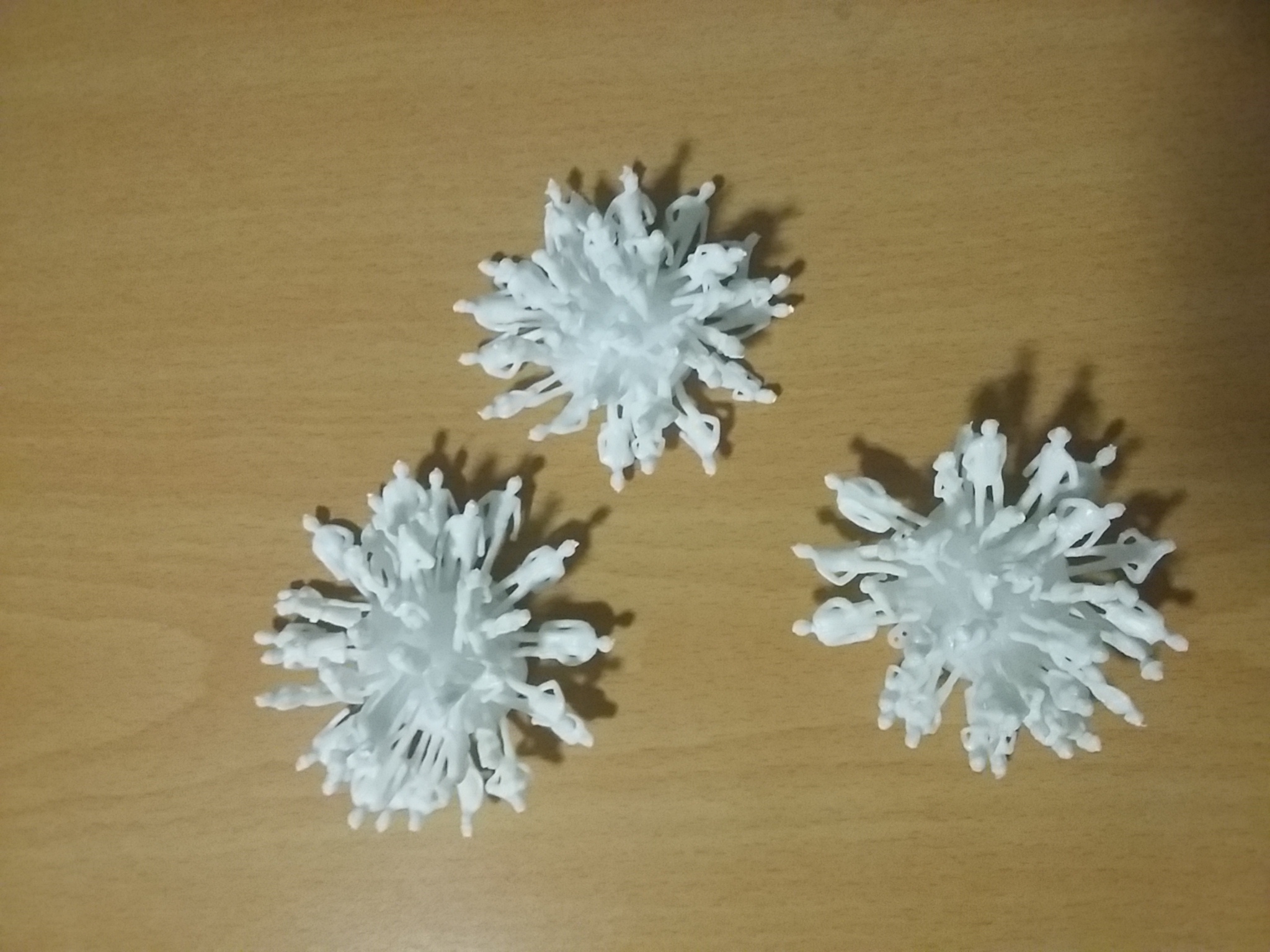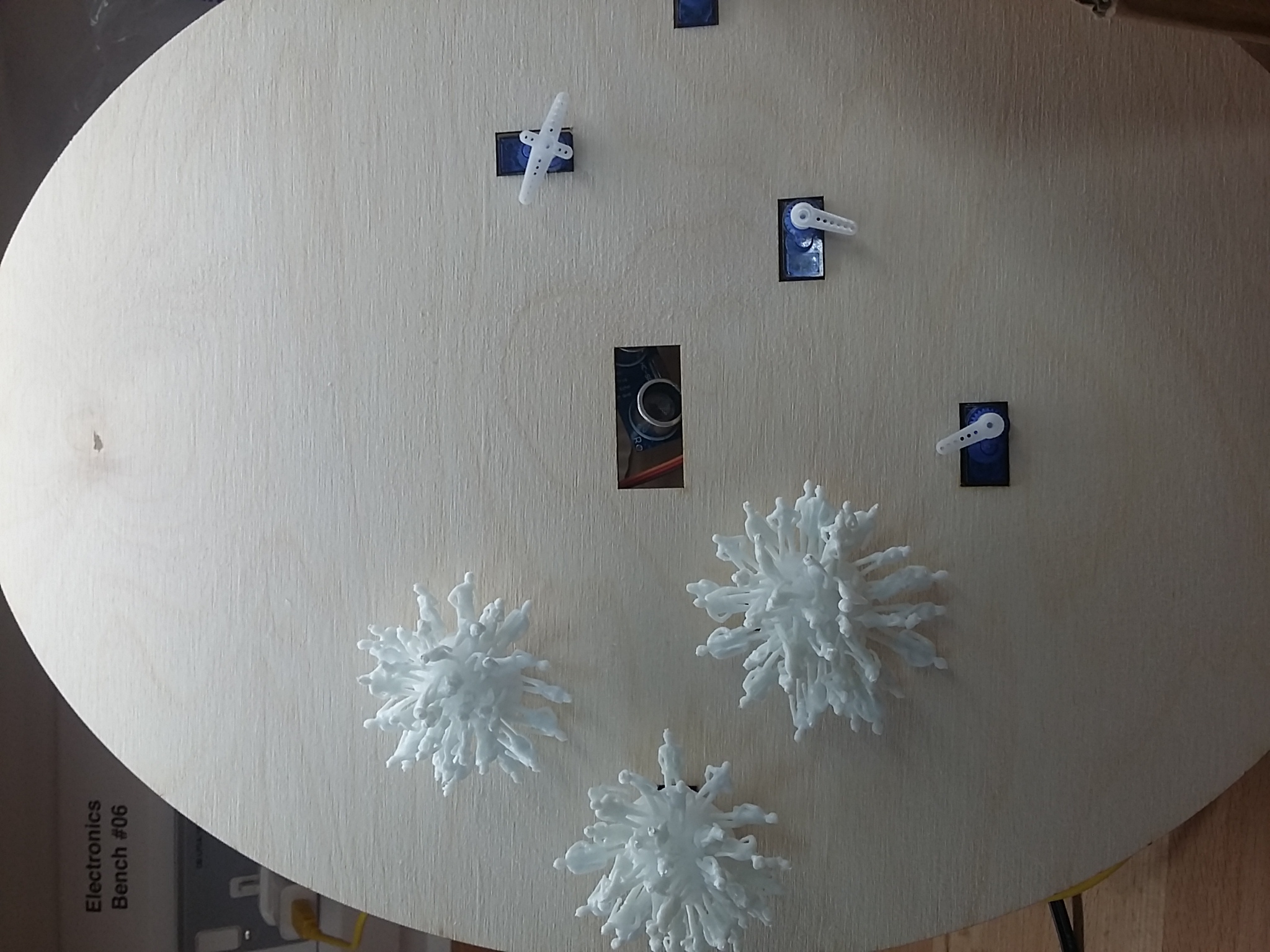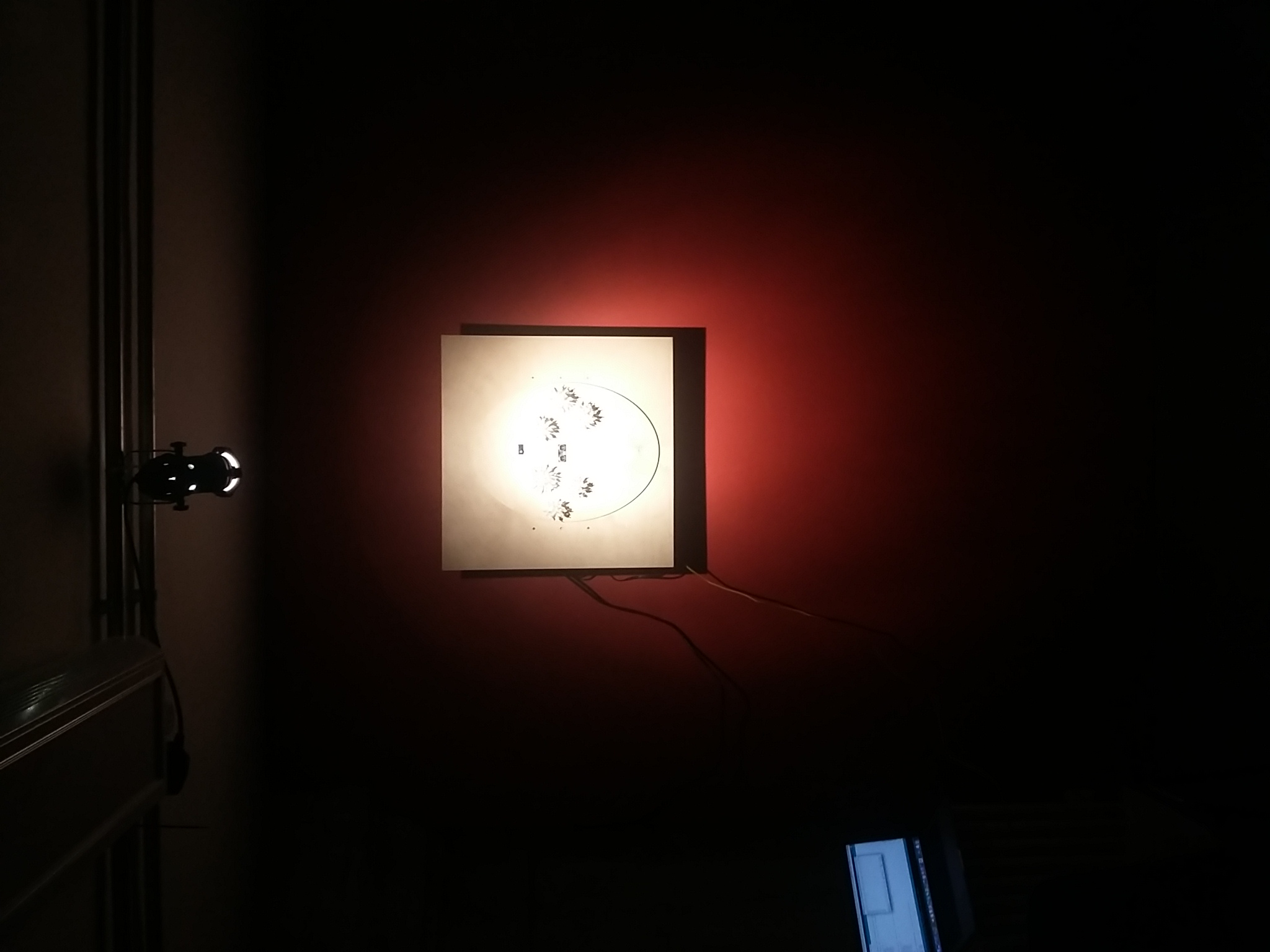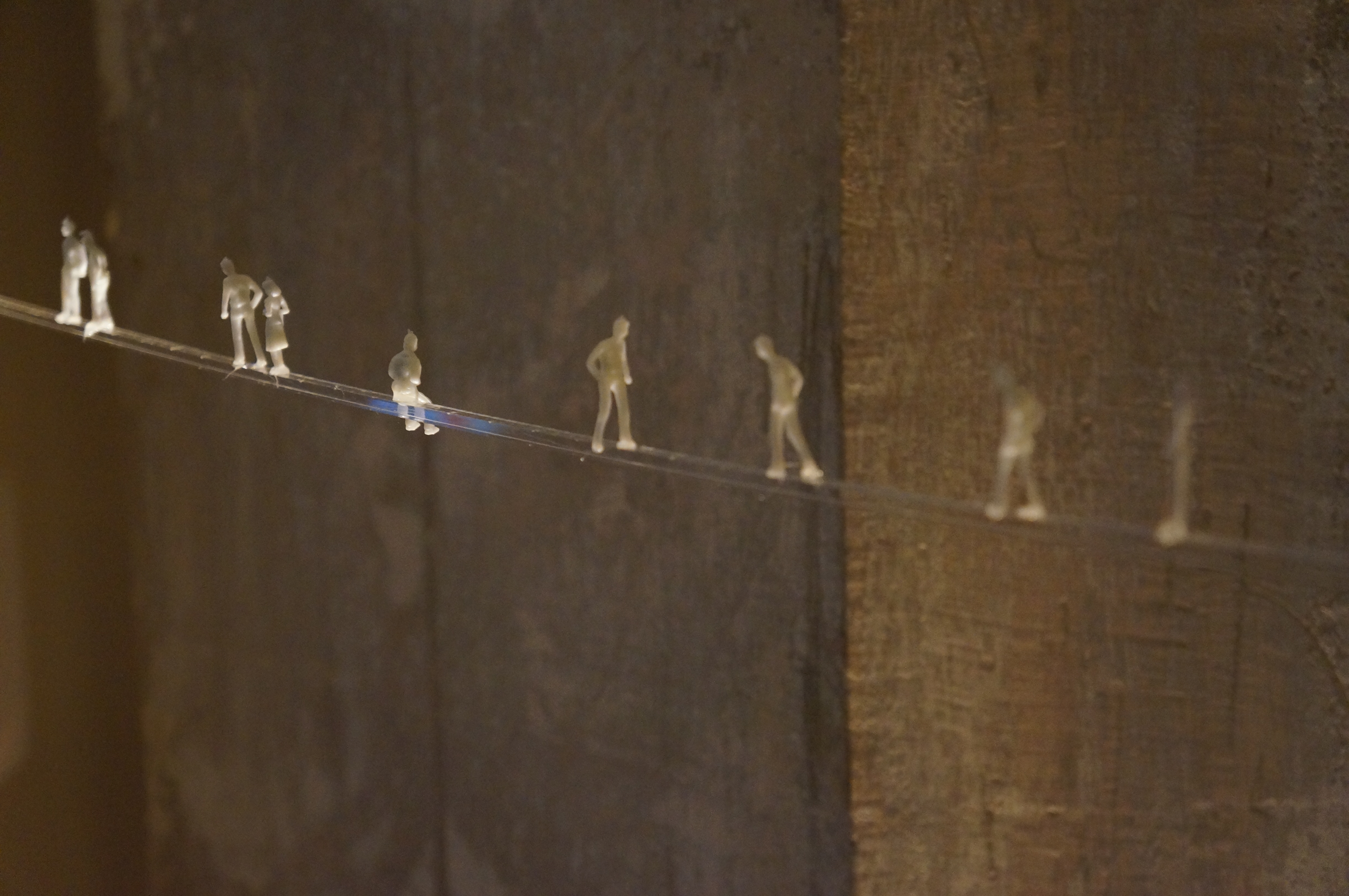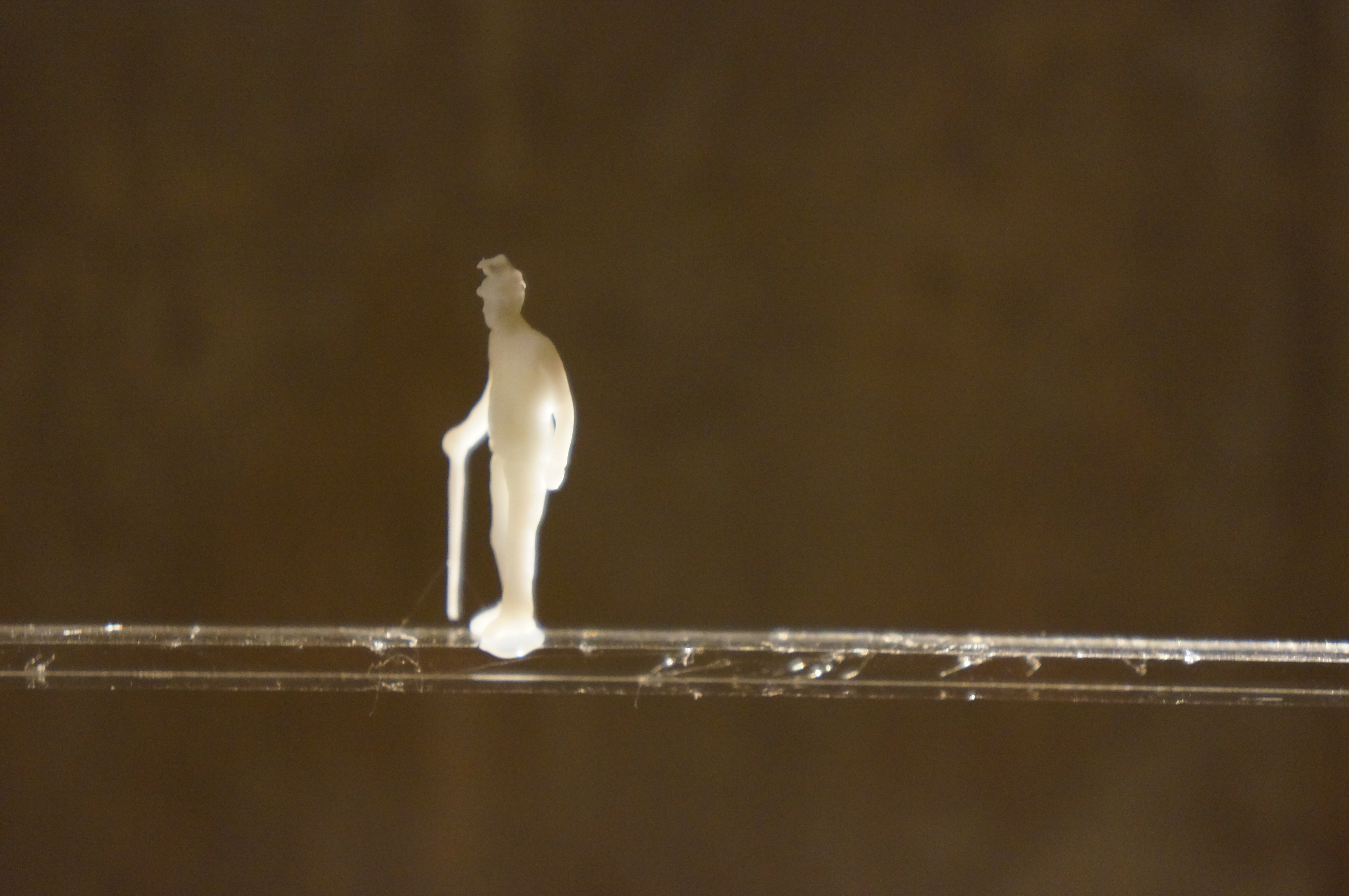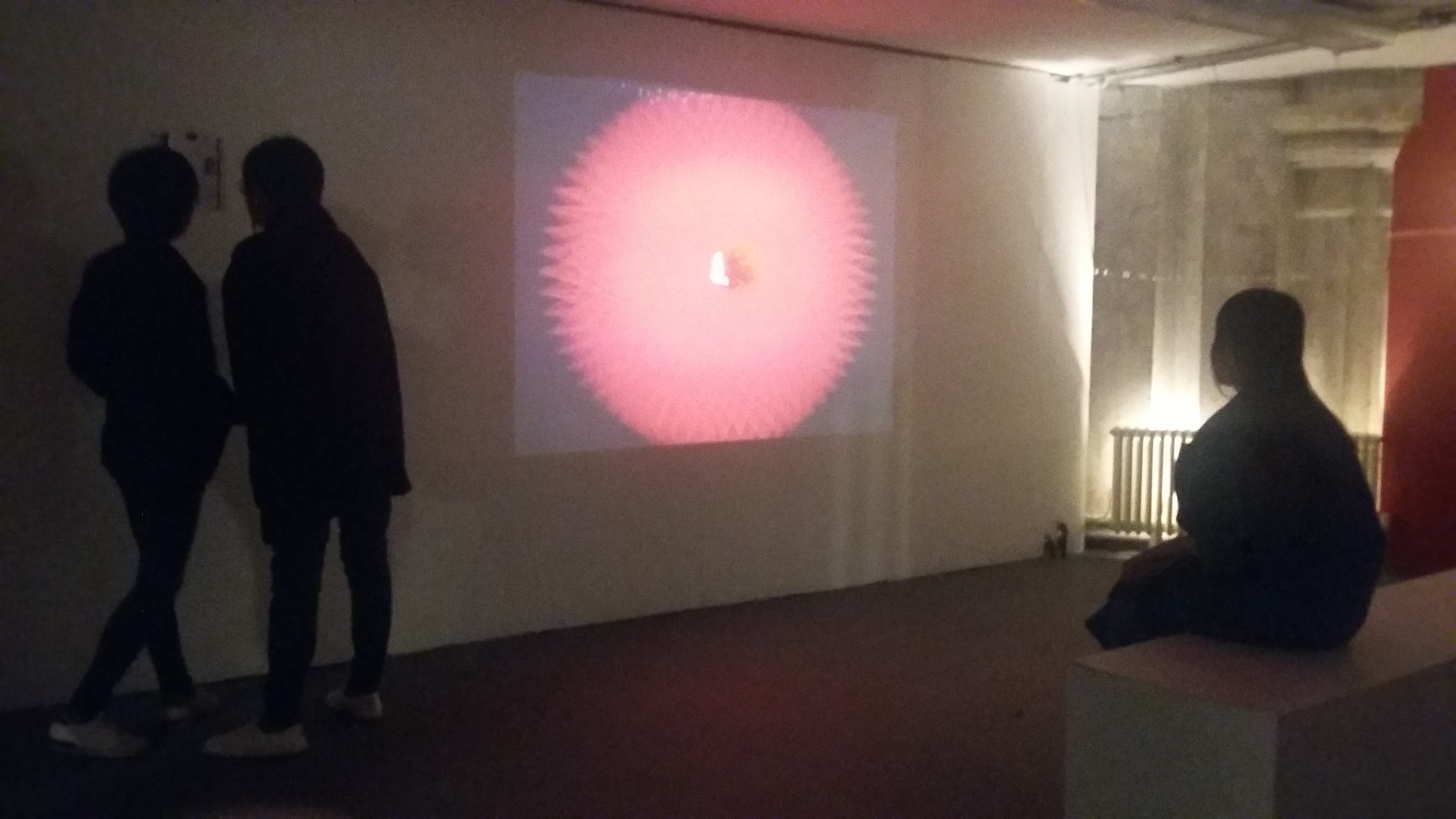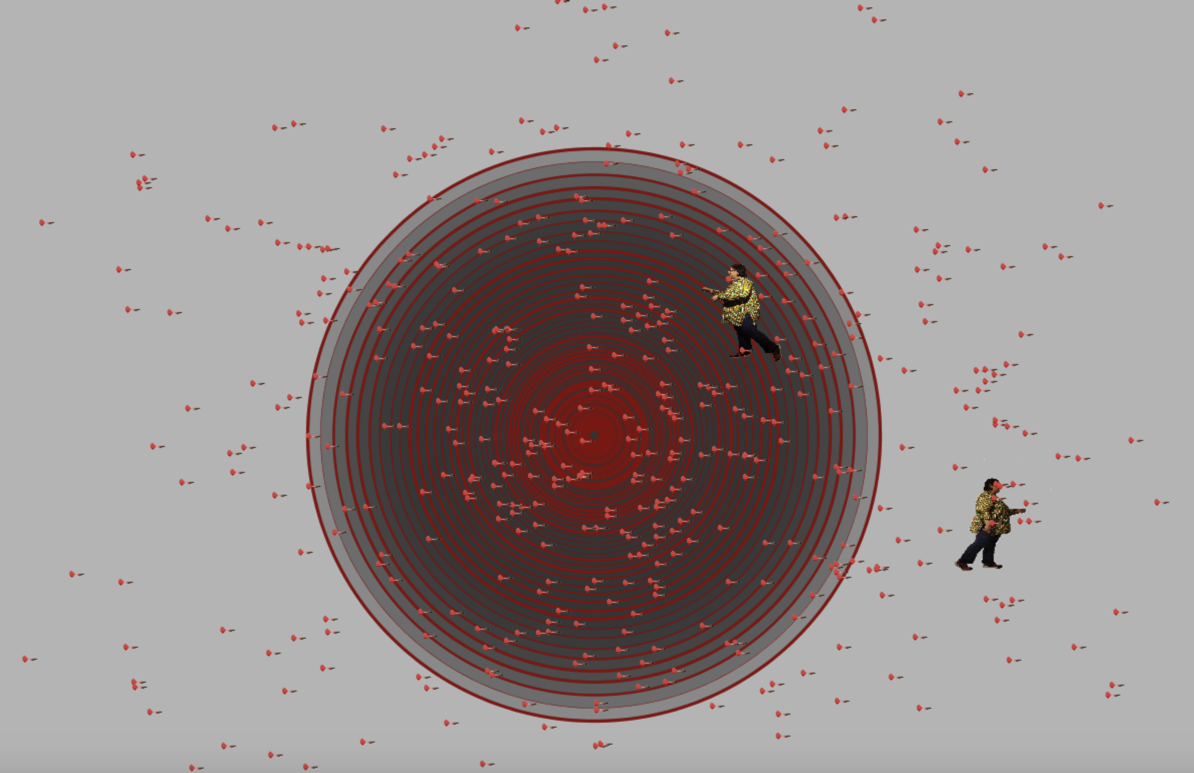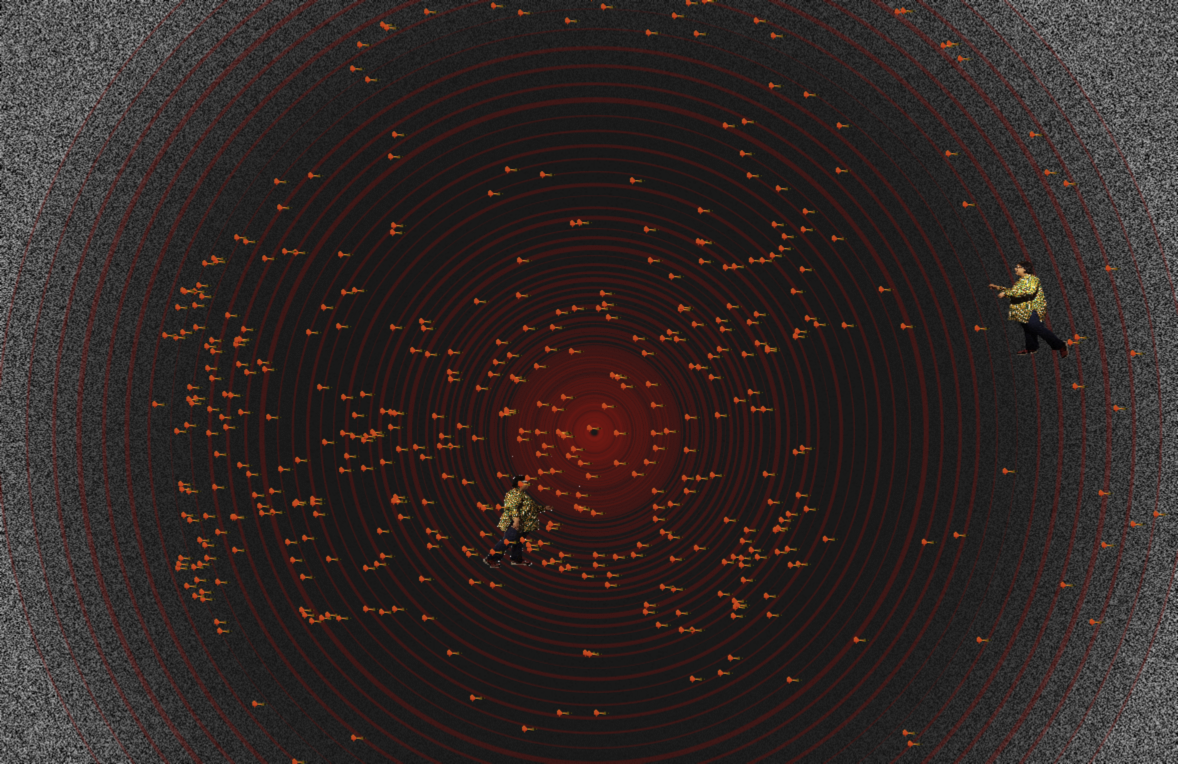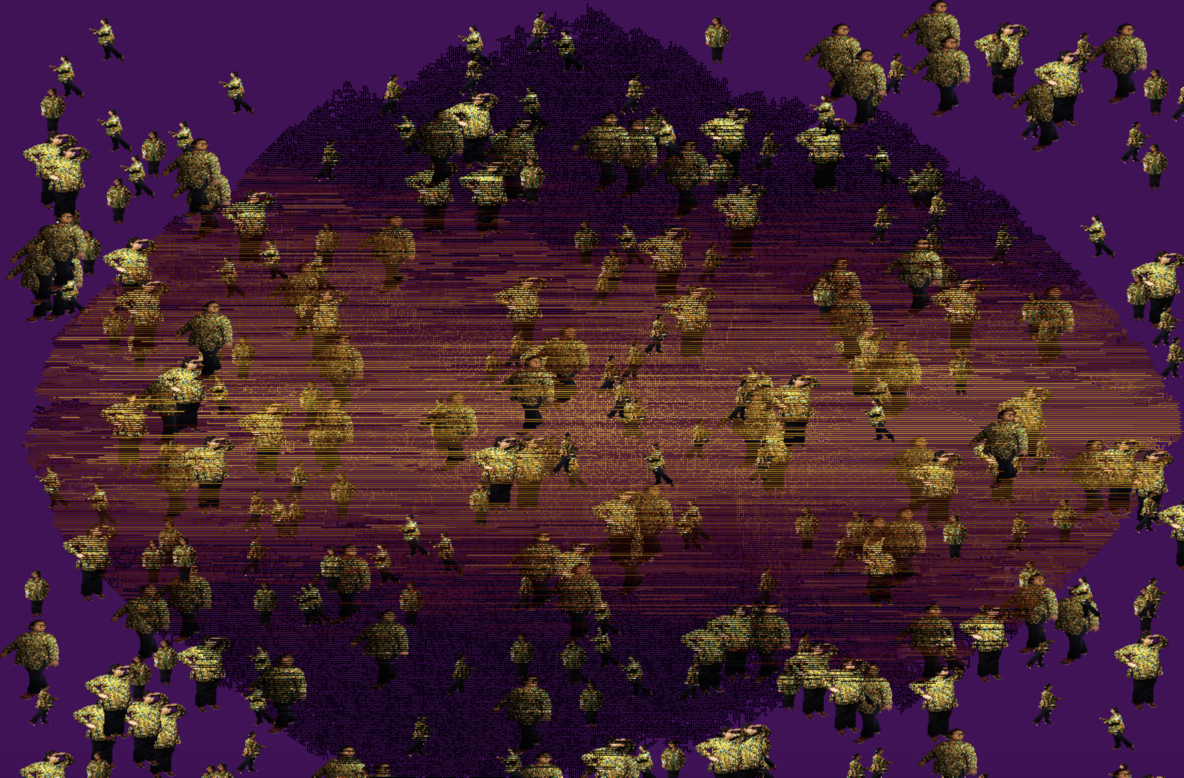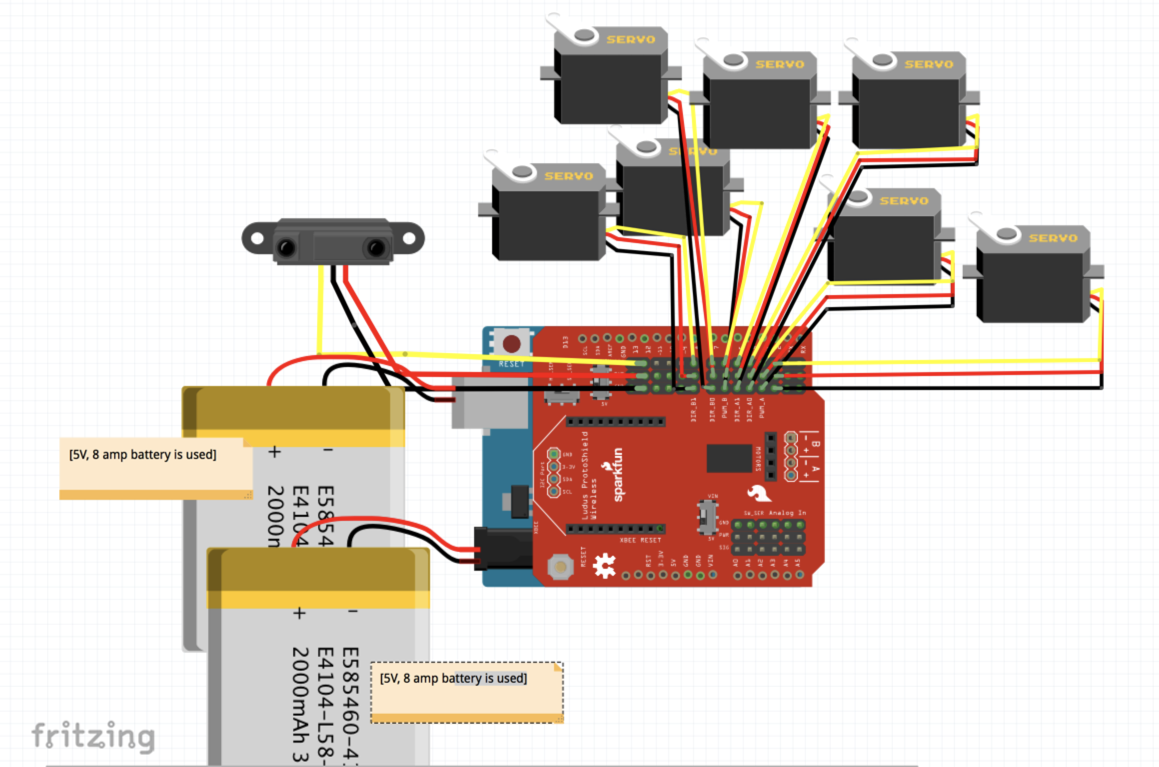What You See - What I am
" What You See - What I am " is an installation to depict struggle of living and dealing with deformed identity as a muslim
produced by: Nadia Rahat
Introduction
What You See - What I Am represents a struggle to live and deal with a deformed identity. Being a muslim dealing with a deformed identity is not only a challenge but also a frustration. The threat of being associated with terrorism can often become a rigid part of my own identity. With growing Islamophobia all over the world, muslim individuals remain in constant tension between two extremes of what their identity is and what it is not.
What You See - What I Am is an installation represented through two artworks connected by a bridge of people. The first, "What You See", is a projection that depicts a series of scenes that visually represent negative stereotyping. This stereotyping often ignores the fact that diversity does exist among muslim communities and can prompt people to unfairly see every individual with the same perception.
"What I am" is a physical, interactive piece which shows a more personal, subtle imagery. It requires the users involvement and encourages observers to be willing to develop a new perspective. This new perspective can only happen if both sides are willing to generate face to face interaction.
"Bridge" represents a mind-scape connecting two identities which are in constant clash with one another. It represents a path of struggle, isolation and frustrations that muslim community faces while dealing with their identity crisis on day to day basis.
Concept and background research
The concept behind my project” WHAT YOU SEE - WHAT I AM” is a struggle to deal with the identity which is loaded with threat, danger and unacceptability. This identity is in total contrast to the one I was born and raised with, which believes in peace, brotherhood, patience and unity in diversity. With growing incidents of terrorism by muslim groups I have realised that people perception are changing. My first encounter was when travelling to USA in 2007 I had to went through rigorous airport checks in separate line. My mother told me that they are doing their duty. In 2009 when I and my mother were walking in South Kensington ,one person came to my mother holding her scarf said “ you dangerous people go back to your country”. That was an eye opener to me as I realised that the treatment I got at airport has started to penetrate into masses also. It further confirmed when recently I myself subjected to same treatment while wearing scarf. All these incidents have made me to question about my own identity and about people perceptions about muslims. I choose to make project on my experience but at the same time in a way that people associate with it and it leads to further dialogue and communication.I did not want to present myself only as victim to get sympathies but my main aim was to convey through this project the need to revive the communications which has been broken among people of different cultutres. During my research I came across article" Where is my Islam? The identity crisis of 21st century Muslims" by Dr. Cawo Abidi which highlights the tension between muslim two extreme identities and "Explaining violent radicalization in Western Muslims: A four factor model by Khouwaga Yusoufzai and Franziska Emmerling " in the Journal of Terrorism research ,which became the basis for my project. As an artist i feel its is more important for me to respond to the times I live in and generate dialogue which can lead people to atleast think about issues that is affecting us all intentionally and unintentionally.
In addition to the research that I did for my project following artists works also inspired my project;Shazia Sikandar “Beyond Surfaces”, Imran Qureshi “Bleed”, Do Hu Suh “ Almost Home”, Kyle Macdonald “glitchy-lisa",Frida Kahlo self portraits. Link can be viewed at:
Technical
“ What You See - What I am” is an installation which consists of a projection, an interactive artwork and bridge of people connection the former two together.
Projection
“ What You See” is a projection consists of six scenes to depict the deformation of identity as a muslim and how it is presented through main stream media to shape the perception of masses. The reason for using projection was to emphasise adverse affects of one way channel of communication. I did not intentionally add any interaction with the projection scenes. I made six scenes in processing and used sine, co sine , pixel processing and particle system algorithms to achieve the visual affects support my idea.
Scene 1
Scene one consists of two portraits woven within the web of lines. It has five classes total including two super classes(inheritance) for images and web of lines. Vector and Phaser is used to add movement and magnitude to the lines. Images ares rotating in centre with one running in clockwise and other in anticlockwise motion to represent the clash of dual identities I have to face daily. There were number of variation I did to achieve the final representation of scene which can be seen in the series of images attached or on following link:
Scene 2
Second scene consists of two classes one for image and other for tangled lines. When I started to develop this scene I used two portraits but later I realise that I am duplicating idea I have already expressed in scene one. To resolve that I choose only one image of mine with scarf to represent how as muslim woman your identity is linked to what you wear which is superficial way to judge any person. Wearing a scarf becomes a symbol of threat loaded with danger. I used noise and map functions to develop random lines floating at the background staining the scarf clad face which is treated by removing the background and adding alpha transparency to it. Development sketches can be seen in the series of images attached or on following link:
Scene 3
Third scene focuses on how the stereotypical perception being portrayed is overshadowing and blurring the real identity making me a target for others. To develop it digitally I constructed two classes. One for image in which I process pixels data by mapping it according to distance and brightness. This generated a targeted circular affect through pixel processing. Second class generated a grid of tiny images of self portrait pulsating and dissolving by using noise and scale functions. Development sketches can be seen in the series of images attached or on following link:
Scene 4
Scene four focuses on depicting a side profile portrait of myself with round halo developing with tiny red dots with images of terror attacks all over the world randomly appearing at the background filling the backdrop of the portrait. I used array of images , ellipse and use noise function to get circular revolving circle. Development sketches can be seen in the series of images attached or on following link:
Scene 5
In fifth scene I try to depict myself running in a dart board game. I used particle system and image of dart to develop flocking movement with the grid at the back using nested loop and two images of myself appearing at random distance between x and y coordinates. Development sketches can be seen in the series of images attached or on following link:
Scene 6
Sixth scene id the graphical representation of myself portrait in mosaic style. My self portrait is created by tiny images of terror attacks happened in USA, Southeast Asia , Europe and UK. In code array of images are used and pixels are replace by tiny images based on the distance between two colours of the images. These tiny images increase in size blurring portrait and making the images of event appear for clearly. Development sketches can be seen in the series of images attached or on following link:
One of the major challenges that I face in my projection was managing the data size as it was running my program slow. I had to resize images in order to overcome the problem and increase frame rate as well. But this affected the image quality of my images.
Another challenge that I faced was during combining scenes. As putting all scenes were affecting the visual display of one another and it was making my code chaotic to read. So I put scenes into classes not only to make code more readable but also to run it without any problem. In looping the scenes class formation also helped me to run scene sequence without any major problem. Once I projected the scenes using projector I had to redo colour settings and image resolutions adjustments to present the projection the way I wanted.
Interactive Artwork
Second interactive piece “ What I am” consists a wooden oval with organic flower forms made from tiny plastic people. These organic forms wave as soon as the viewer comes in contact face to face with the artwork.This piece was developed by using Arduino micro controller ,sensor shield, proximity sensor and seven servo motors.
This piece went through various developmental stages. Initially I used potentiometer but discarded it immediately as without instructions it was not possible for the viewer to interact. To achieve spontaneous interaction I used PIR sensor to detect motion. The circuit was working fine and PIR sensor detects motion immediately but the main obstacle came about controlling the wide range of motion that PIR sensor was detecting. PIR sensor was detecting movement within 10-15 feet. This was not what I wanted for my piece which was designed to have face to face interaction.The only way to handle that was to cover the sensor manually with some mask. I did not opt for that option as that for me was damaging the idea of developing the piece with the technology. So the only option I left was with to find an alternate sensor. After further research I finally selected Ultrasonic proximity sensor. It was most suitable option as it detects object at 90 degrees and distance can be adjustable. The only minor problem that I had to face was that it take a short while for sonic waves to reach the sensor. This minor default was adjusted in coding by delay adjustments and precise distance range.
Another major challenger for which I did not prepare was the amount of current required by the servo motors. Normally we are concerned with the voltage but instead of providing the required voltage the servo motors were not running due to current shortage. This was overcome by providing required voltage and current through 5v 8 Amp two separate battery chargers.
Interface of this artwork also went through different stages. I use oval as it has been used through centuries for self portraits and “What I am” also presents portrait of what I am. Prototype was developed and various options were explored before the final layout is laser cut in wood and fined together. Organic flower forms are developed by using meltable plastic for people and for fusing them together. Developmental stages of this interactive artwork can be seen on following link:
Installation
" What you see" and "What I am " are joined visually by a thin bridge constructed from thin strip of acrylic with tiny plastic people randomly placed moving towards two extremes. Colour of the walls were also changed to make aesthical experience for the viewers.
Future development
This project was not only the continuation of my art practice but also helped me to identify future paths for it. I am pleasantly surprised how coding provide enormous opportunities to present my artwork while reinventing my art practice. If I have to develop it further I would be developing further interactive pieces as they are more powerful in connecting with people and transferring ideas quickly.
Another element that I would like to investigate further is the Generative algorithm. Due to its evolving nature I can see it naturally linked with the human behaviour which is also constantly evolving.
Self evaluation
Most of the time your idea defines your work but sometimes its the work that defines your idea as well. In my case my project evolved through both ways, my idea defines my art forms and my art forms further polish my idea. For example initially I was aiming to use single interactive hanging piece , but through critique sessions and self analysis of my concept I realised that I am talking about two opposite identities and representing them into a single piece is not turning out effectively. At that time I made major change in my project and decided to develop two separate artworks each stand for what I am and what I am not and this turned out to be effective in supporting my idea.
In my projection I had to compromise on the image quality used in processing . In looping the scenes I am still unable to locate the problem in scene two where my image slightly moves to new location when loop restarts again.
Similarly in interactive piece I had to discard PIR sensor because of the wide range it was responding to. I could have used it by manually masking the PIR sensor but I did not want to fake the use of technology in my work so I switched to proximity sensor which provided me the right kind of interaction that I needed for my this piece.Overall I am very satisfied with my project as I could clearly see people getting the idea and were interested to know more about.
References
Articles:
http://edition.cnn.com/2015/08/24/opinions/islam-identity-crisis-cawo-abdi/index.html
http://edition.cnn.com/2015/08/24/opinions/islam-identity-crisis-cawo-abdi/index.html
Exploring the Faith and Identity Crisis of American Muslim Youth
https://www.theguardian.com/global/2015/may/17/losing-their-religion-british-ex-muslims-non-believers-hidden-crisis-faith
http://www.independent.co.uk/voices/why-the-british-media-is-responsible-for-the-rise-in-islamophobia-in-britain-a6967546.html
https://www.thecordobafoundation.com/attach/ARCHES_Vol%204_Edition%207.PDF
Images, Arduino and codes references
http://graphics.wsj.com/terror-timeline-since-911/
http://time.com/4268579/brussels-attacks-islamist-terrorism-isis/
https://storymaps.esri.com/stories/terrorist-attacks/?year=2017
https://learn.adafruit.com/pir-passive-infrared-proximity-motion-sensor/using-a-pir
https://playground.arduino.cc/Code/PIRsense
An Easy Way to Build an Arduino Powered Motion Sensor Alarm
https://www.tautvidas.com/blog/2012/08/distance-sensing-with-ultrasonic-sensor-and-arduino/
https://www.openprocessing.org
https://processing.org
http://dep.fie.umich.mx/~garibaldi/data/uploads/graficacion/nature_of_code-005_shiffman_12.4.12.pdf
Daniel Shiffman video on youtube for image processing
Daniel Shiffman video on https://www.youtube.com/watch?v=nnlAH1zDBDE,
Daniel Shiffman series on Pixel Processing on Youtube,
particle system by daniel shiffman"https://processing.org/examples/simpleparticlesystem.html,
class lectures delivered by Dr.Tim Blackwell and Coding sessions run by Mr.Lior Ben Gai,
Self Photography by Ms. Mehrbano Khattak.
